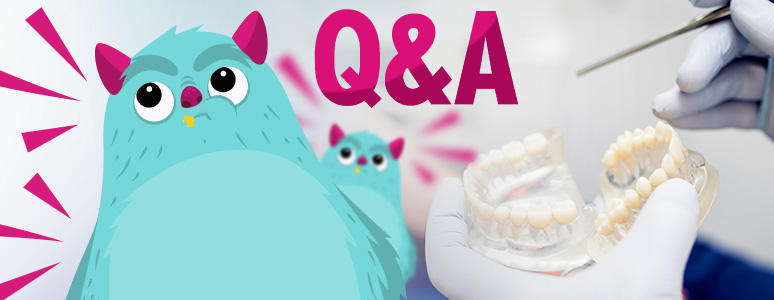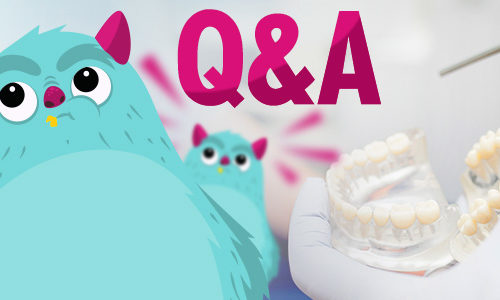-
Easing Toothache: Top 10 Effective Pain Relief Strategies for Tooth Pain
Ever been kept awake by a throbbing tooth or found yourself wincing at the cold touch of ice cream? Toothaches, ranging from mild discomfort to severe pain, are a common issue that many people deal with. But don’t worry, we’ve got a roadmap to guide you through the landscape of toothache pain relief. Key Takeaways Understanding toothaches involves identifying the cause and seeking professional care. Over-the-counter medications, cold compresses, elevating the head at night, numbing gels/ointments & rinsing techniques can provide temporary relief from pain. Good oral hygiene & seeing a dentist are recommended for prevention & treatment of continuous toothache. Understanding Toothaches Toothaches are a result of irritation to…
-
Tooth Decay: Proven Strategies for Cavities – Prevention and Repair
Understanding tooth decay is like deciphering a secret code. The more you know about it, the better equipped you are to prevent it. From the microscopic bacteria that start the decay process, to the foods and drinks that fuel the decay, to the symptoms and treatments, it’s a fascinating journey that can lead to a healthier and happier smile. Key Takeaways Understanding the causes and preventative measures of tooth decay is essential for combating this enemy. Regular dental checkups are necessary to detect and treat tooth decay, while fluoride treatments provide a shield against bacteria. Establishing good oral hygiene habits can help prevent cavities, as well as managing pain or…
-
Managing Wisdom Teeth Swelling: Effective Tips for Comfortable Recovery
Swelling after wisdom teeth removal, also known as wisdom teeth swelling, might seem like an unwelcome guest, but in reality, it is an expected part of your healing journey. This swelling, while often discomforting, signals that your body is hard at work repairing the extraction site, paving the way towards a comfortable recovery. But the question is, how do we manage this wisdom teeth swelling effectively, and what are the best methods to minimize discomfort? Let’s find out. Key Facts Swelling following wisdom teeth removal is a normal part of the healing process, though potential complications can cause increased inflammation. Reducing swelling and promoting comfortable recovery involves cold compresses, anti-inflammatory…
-
Dentin Dysplasia – Type 1 (I), Type 2 (II), Types, Radiograph, Treatment, Histology, vs Dentinogenesis Imperfecta
Key Facts Dentin dysplasia affects dental development, primarily impacting the dentin, a key component of teeth Dentin dysplasia is a rare condition affecting one in every 100,000 people It usually becomes apparent in childhood and can affect both primary (baby) and permanent teeth The condition is characterized by abnormal dentin structure It’s leading to dental issues like discolored teeth, tooth mobility, or premature tooth loss What is Dentin? Dentin is the layer of tissue beneath the enamel, making up the bulk of a tooth’s structure. It’s harder than bone but softer than enamel. Dentin plays a crucial role in protecting the innermost part of the tooth, the pulp, which houses…
-
Oral Leukoplakia (OL) – Treatment, Causes, Images, Tongue, Differential Diagnosis
Key Facts Oral leukoplakia refers to thickened, white patches that form on the mucous membranes of the mouth, which cannot be wiped away It’s among the most common oral lesions, affecting approximately 1% of the global population While often benign, some types of leukoplakia can be precursors to oral cancer Strongly associated with tobacco use, including smoking and chewing, but can also result from irritations like rough teeth or fillings Treatment depends on the lesion’s appearance, the presence of symptoms, and if there’s evidence of cancerous changes What is Oral Leukoplakia? Oral Leukoplakia, derived from the Greek words leuko (white) and plakia (patch), describes white patches that form on the…
-
Dentinogenesis Imperfecta – Types, Treatment, Radiograph, Type 1 2 3
Key Facts Dentinogenesis Imperfecta (DI) is a rare genetic disorder affecting the formation of dentin It is characterized by discolored (often blue-gray or yellow-brown) and translucent teeth The condition makes teeth vulnerable to wear, breakage, and loss DI can affect both primary (baby) and permanent teeth The disorder is linked to mutations in the DSPP gene There are three types of DI, with Type II being the most common What is Dentinogenesis Imperfecta? Dentinogenesis Imperfecta is a hereditary condition that impacts the formation of dentin – the calcified tissue underneath the tooth’s enamel. Dentin plays a significant role in the strength and structure of teeth. When it’s compromised due to…
-
Enamel Hypoplasia – Treatment, Causes, Types, in Adults, vs Fluorosis, vs Amelogenesis Imperfecta
Enamel hypoplasia, a condition characterized by an enamel defect, affects both a child’s baby teeth and permanent teeth. It involves inadequate or incomplete development of dental enamel, leading to hypoplastic teeth that are often more susceptible to dental problems. Understanding the causes, symptoms, and treatment options is crucial for maintaining oral health. Key Facts Enamel hypoplasia refers to the inadequate development or thickness of tooth enamel It can arise due to genetic factors, prenatal issues, early childhood illness, nutritional deficiencies, or exposure to certain environmental factors Teeth affected may be more prone to cavities and can have cosmetic concerns Depending on severity, treatments range from dental bonding to veneers or…
-
Sialadenitis – Treatment, Symptoms, Radiology, ICD-10, Pathology, Antibiotics
Key Facts Sialadenitis is an inflammation of the salivary glands, which produce saliva, an essential fluid for oral health It can result from bacterial or viral infections, obstructions, or autoimmune conditions Patients may experience pain, tenderness, redness, and swelling over the affected gland, often accompanied by fever Treatment ranges from antibiotic therapy, hydration, warm compresses, and, in some cases, surgical intervention Proper oral hygiene and regular dental check-ups can significantly reduce the risk of developing sialadenitis What is Sialadenitis? Sialadenitis, at its core, is the inflammation of one or more of the salivary glands. The human mouth houses three primary salivary glands: the parotid, submandibular, and sublingual glands. Any of…
-
Ranula Under Tongue – Radiology, Treatment at Home, Surgery, Pathology, Excision
A ranula is an oral condition characterized by a mucus retention cyst, typically forming under the tongue in the oral cavity. This cystic lesion is often a result of a damaged salivary gland, specifically the major salivary glands like the submandibular gland or, less commonly, from the minor salivary glands. It’s one of the more common salivary gland disorders and can range from a simple oral ranula to a more complex plunging ranula. Ranulas present as swelling in the mouth, which can range from minor inconveniences to significant obstructions, depending on their size and location. Understanding ranula formation, diagnosis, and treatment is crucial for oral healthcare professionals. Key Facts The…
-
Odontoma – Compound, Complex, Radiograph, Treatment, Dilated
Key Facts Odontomas are benign (non-cancerous) tumors made up of dental tissue, often appearing as a mixture of enamel, dentin, cementum, and pulp They are primarily classified into two types – compound and complex Considered one of the most common types of odontogenic tumors Often linked to trauma or infection in primary teeth or genetic factors Usually detected during routine dental X-rays Surgical removal is the standard procedure for most cases What is Odontoma? An odontoma refers to a benign dental tumor, typically composed of all the different types of dental tissues. It can be thought of as a tooth that’s gone astray in its formation process. While it does…


